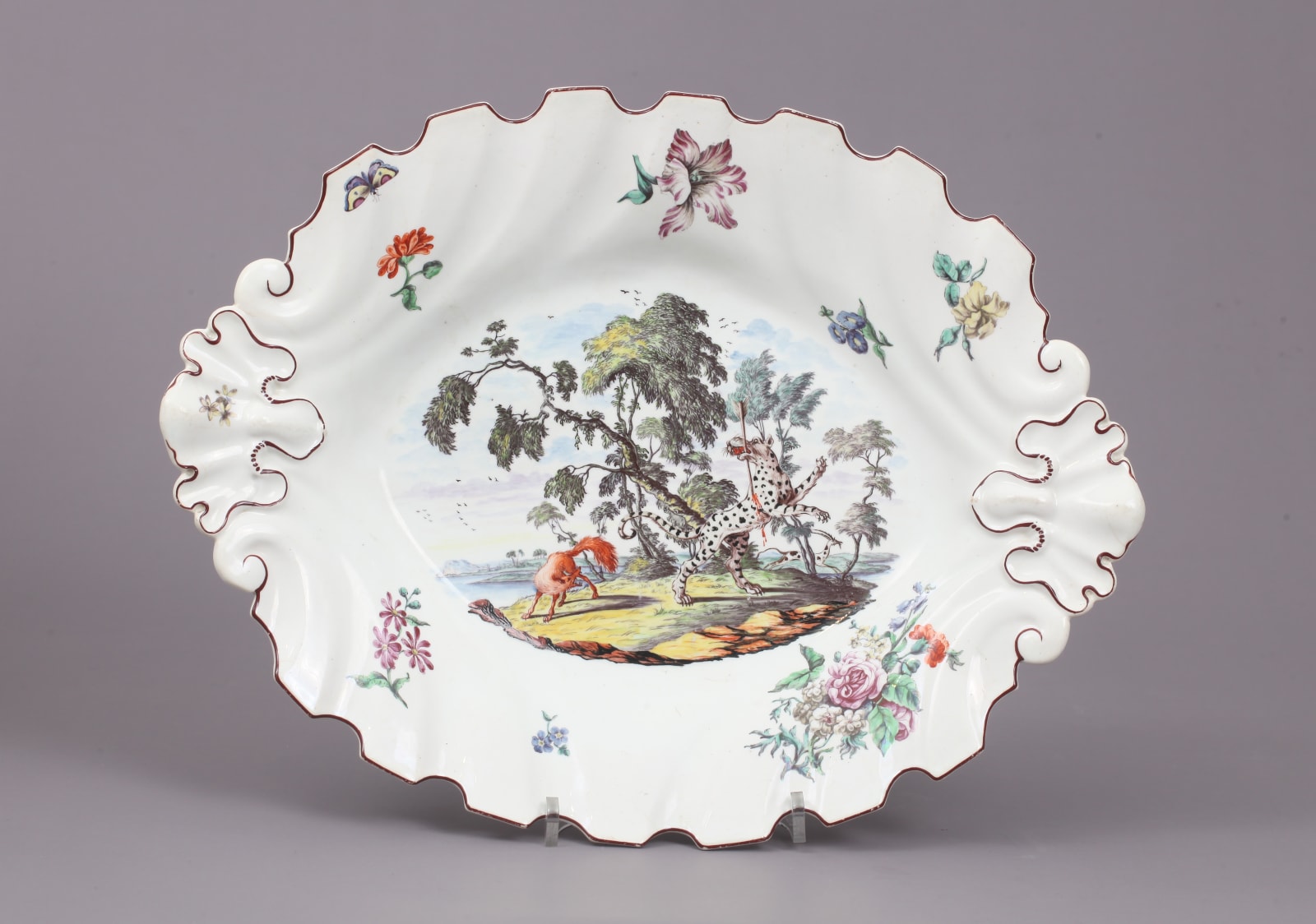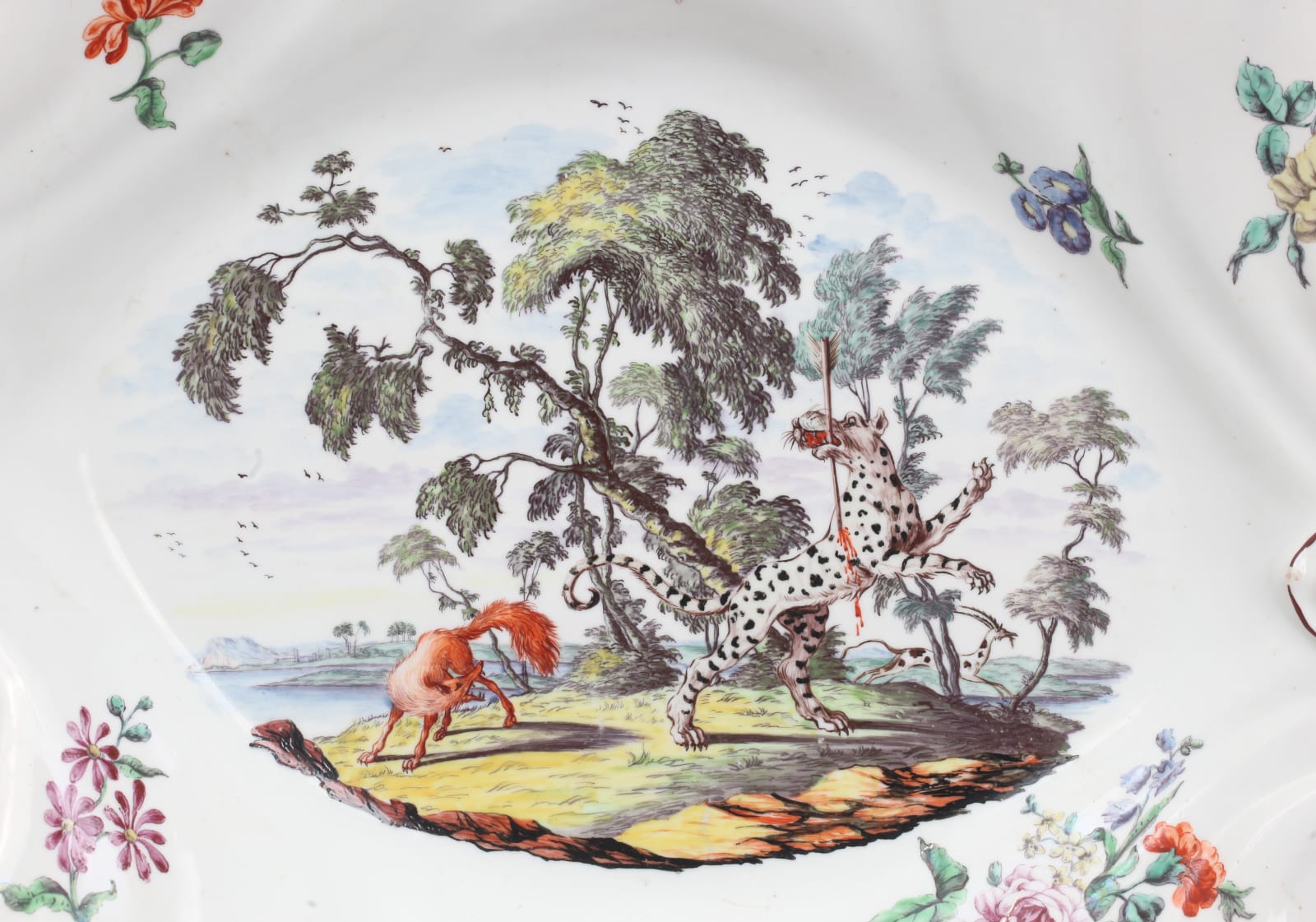

A very large and Important Chelsea Porcelain Silver Shaped Dish, Circa 1752
A very large and Important Chelsea Porcelain Silver Shaped Dish, of oval shape with moulded shell shaped thumb pieces. Beautifully decorated in a full and lavish palette by Jefferyes Hamett O’Neale with the Fable of ‘The Fox and the Tiger’. The dramatic scene shows a dappled White Tiger speared by an Archer’s arrow, rearing up and trying to take the arrow out of its ribs, a fox barks out to the side, its body hunched and bushy tail animated with the surprise of the scene of attack. An antelope races off to safety in the background behind the group of tall, leafy and windswept trees. The whole drama acted out on an island within a river scene with distant islands and a settlement or village to one side in the distance before a mountainous range. All beneath a full brooding and expansive sky with blue and pale puce cloud cover in which fly flocks of birds. Framed in the foreground with characteristic ‘Vandyke brown’ rocks. Surrounding the central oval scene are full bouquets of European flowers including roses, poppies, bluebells, and scented stocks and other lesser bouquets and floral sprigs, within a brown line rim.
Jeffereys Hamett O'Neale, was an Irish miniaturist of enormous skill. He practised for many years in London as a miniature-painter, and exhibited occasionally with the Incorporated Society of Artists, of which he was a fellow, being one of the artists who signed the declaration roll in 1766
His work at the Chelsea porcelain manufactory is hugely rare and it is where he made a name for himself painting Fables of animals after Aesop’s Greek original stories. His style often renders the animals with human characteristics, where they often appear to be in conversation with each other.
All these the very hallmarks of O’Neale’s detailed and dramatic style for which he was famed. Dr F Severne MacKenna notes of the Chelsea Fable decoration that,’they have been identified in the majority of instances and there is a perennial delight in discovering for oneself the original engraving from which any given scene was derived adapted. This scene is taken from Samuel Croxhall’s 1722 edition of Aesop’s Fables, he was the Dean of Hereford and dedicated his publication to the son of the Earl of Halifax. Elizabeth Adams notes that ‘the illustrations were adapted rather than copied, the backgrounds being frequently simplified, while the poses of the animals were sometimes modified to suit the design, or the shape of the ware on which they were to be rendered.’ This size of the silver shaped dish, designed and effected as a silver original by Nicholas Sprimont himself, is the largest made at Chelsea of this specific form.
Fable LI Aesop, translated by Croxall and published 1722.
Provenance
The Stanley Collection, W H Pitts & Private CollectionExhibitions
Chelsea Cheyne Exhibition, Chelsea Town Hall. June 1924.
Literature
Reginald Blunt, ‘The Cheyne Book of Chelsea and Pottery.’ Pl.3 no.26, one of a pair.Join our mailing list
* denotes required fields
We will process the personal data you have supplied in accordance with our privacy policy (available on request). You can unsubscribe or change your preferences at any time by clicking the link in our emails.

